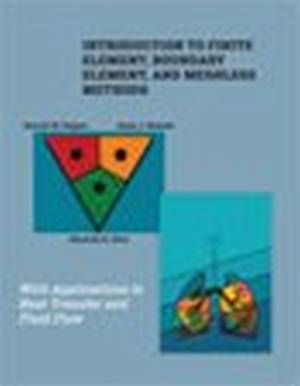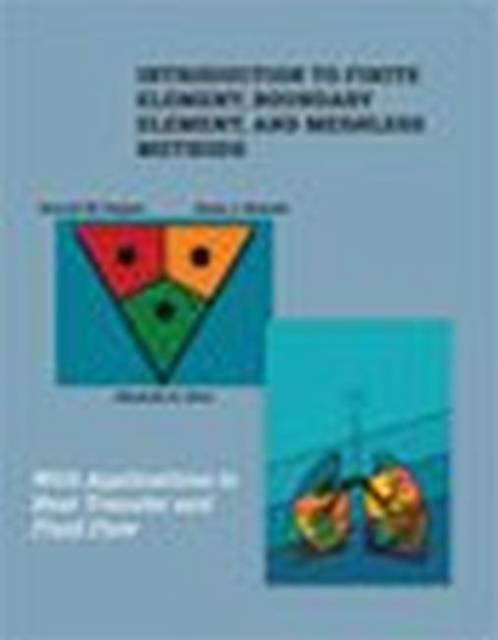
- Afhalen na 1 uur in een winkel met voorraad
- Gratis thuislevering in België vanaf € 30
- Ruim aanbod met 7 miljoen producten
- Afhalen na 1 uur in een winkel met voorraad
- Gratis thuislevering in België vanaf € 30
- Ruim aanbod met 7 miljoen producten
Zoeken
Introduction to Finite Element, Boundary Element, and Meshless Methods
With Applications to Heat Transfer and Fluid Flow
Darrell W Pepper, Alain J Kassab, Eduardo A Divo
Hardcover | Engels
€ 207,95
+ 415 punten
Omschrijving
When students once master the concepts of the finite element method (and meshing), it's not long before they begin to look at other numerical techniques and applications, especially the boundary element and meshless methods (since a mesh is not required). The expert authors of this book provide a simple explanation of these three powerful numerical schemes and show how they all fall under the umbrella of the more universal method of weighted residuals. The book is structured in four sections. The first introductory section provides the method of weighted residuals development of finite differences, finite volume, finite element, boundary element, and meshless methods along with 1D examples of each method. The following three sections of the book present a more detailed development of the finite element method, then progress through the boundary element method, and end with meshless methods. Each section serves as a stand-alone description, but it is apparent how each conveniently leads to the other techniques. It is recommended that the reader begin with the finite element method, as this serves as the primary basis for defining the method of weighted residuals. Computer files in both MathCad and MATLAB are available from the fbm.centecorp.com website, along with example data files.
Specificaties
Betrokkenen
- Auteur(s):
- Uitgeverij:
Inhoud
- Aantal bladzijden:
- 334
- Taal:
- Engels
Eigenschappen
- Productcode (EAN):
- 9780791860335
- Verschijningsdatum:
- 3/10/2014
- Uitvoering:
- Hardcover
- Formaat:
- Genaaid
- Afmetingen:
- 178 mm x 254 mm
- Gewicht:
- 793 g

Alleen bij Standaard Boekhandel
+ 415 punten op je klantenkaart van Standaard Boekhandel
Beoordelingen
We publiceren alleen reviews die voldoen aan de voorwaarden voor reviews. Bekijk onze voorwaarden voor reviews.








